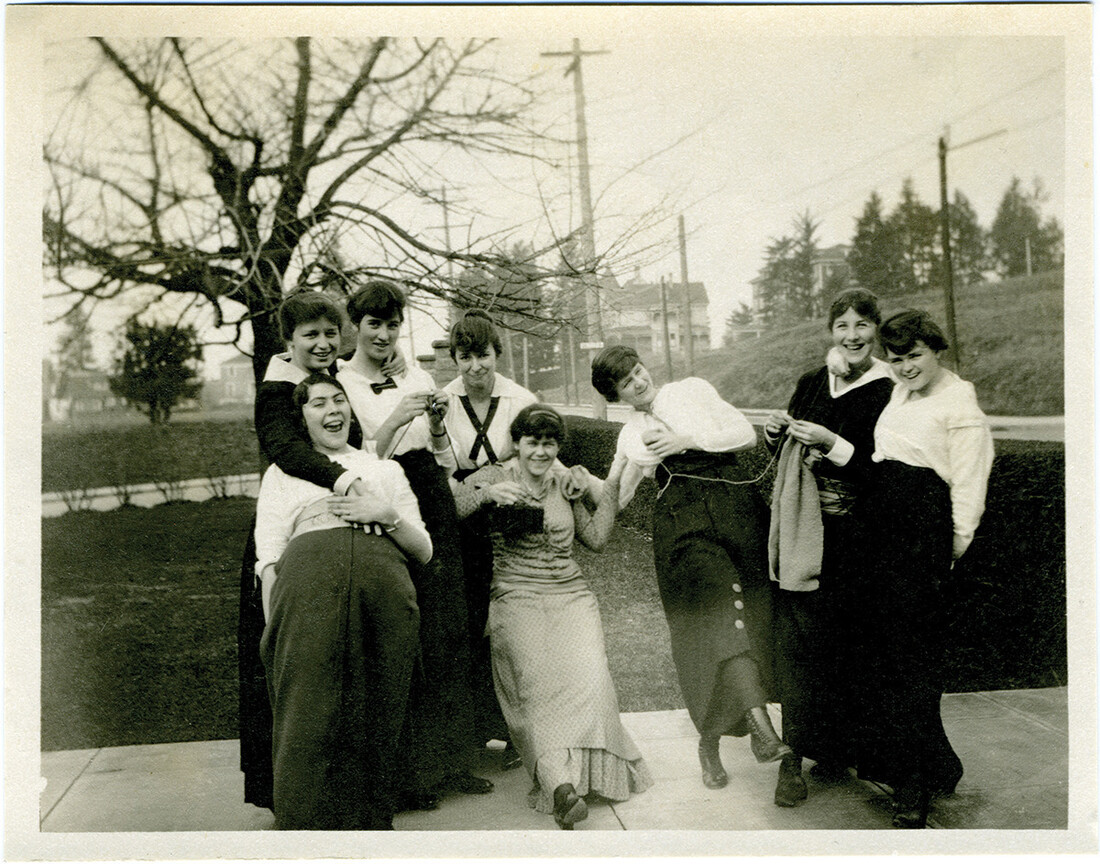
A Community Knit Together
The grey room was warmly aglow with the latest personal updates and the rhythmic clack of knitting needles. Likely, a scene like this has been experienced countless times before; it almost sounds like the setting for the next feel-good film to hit the screen. The characters in the room boast a bevy of remarkable personalities, including the famously knowledgeable matriarch and her infectiously passionate unofficial second-in-command, recent immigrants to Canada and their friend who assists with the English language patterns, new knitters who sit under the benevolently watchful gaze of the masters, my own incredibly skilled grandmother, and me, sitting in reverent awe of all of them. As the needles clacked, conversation picked up easier than most of our stitches, and it didn’t take long to see that why knitting was so important to women of the past. It wasn’t just practical. It was central to the community, and boasts a surprisingly diverse history.
In Canada, knitting was brought over by immigrants and was seen as a crucial part of existence during the harsh winters. Often it can be seen that knitting was a reflection of the social climate, as knitting patterns often reflected the times. In the 1930s, patterns were created to be more easily mended rather than replaced. The 1940s saw a call on citizens to knit for the war, thereby decreasing the demand on the government for items such as socks and scarves, and also giving those at home a sense of purpose in the war effort. The last decade has seen an enormous knitting revival thanks to the Handmade Revolution and the internet. Knitting is even gaining stride once again in prisons and public education, the later seeing remarkable success when high-risk and ADHD students are permitted to knit in class. It seems that no matter the community or its need, knitting can be found somewhere in the woodwork. The Fort Edmonton Park Knitting Circle is no exception.
Undeniably, a YouTube video is no match for the helping hand of an experienced companion. If you were to transport the Fort Edmonton Park Knitting Circle back 150 years ago, you would likely find a set up incredibly similar to the one you see today. Knowledge being shared among generations, newcomers to Canada being welcomed into the midst, and personal stories of home and family being explored. It is a common thought that the days of centering community around face-to-face contact have passed. Yet if social circles such as that found at Fort Edmonton Park are any indication, this couldn’t be further from the truth. It should be argued that knitting circles, occasionally called a “Knit and Natter” or a “Stitch and Bitch” by the tongue-in-cheek knitting community, have a valuable place within heritage and culture. Not only are narratives being shared, but there is a tactile element that connects us not only to one another, but to those who came before us.
Being a part of that tradition here at Fort Edmonton Park is just another way one could celebrate the ways in which history, and community, knit us together. We are incredibly grateful for all our dedicated volunteers at Fort Edmonton Park.